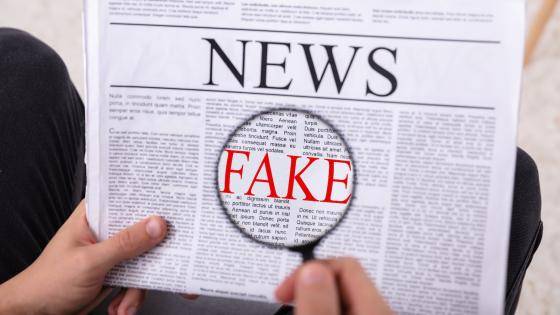The Deluge of Disinformation in the Digital Age
The digital age has ushered in an era of unprecedented connectivity, allowing us to access information from around the globe within seconds. However, this interconnectedness has also created a fertile ground for the rapid dissemination of misinformation, often disguised as authentic news. From the moment we wake up and check our phones, we are bombarded with a barrage of notifications, news alerts, and social media updates, many of which contain dubious or outright false information. This constant influx of information makes it increasingly challenging to discern truth from falsehood, leaving us trapped in a web of misinformation that can have serious real-world consequences.
Throughout history, rumors and false narratives have been used to manipulate public opinion and advance specific agendas. While the underlying motives – political, commercial, or personal – remain consistent, the methods of dissemination have evolved dramatically. In the past, the spread of misinformation was a slow, laborious process, relying on posters, pamphlets, and word-of-mouth. Today, the internet and social media platforms act as powerful amplifiers, enabling false information to spread globally within minutes. This accelerated pace makes it difficult for fact-checking mechanisms to keep up, allowing misinformation to take root and influence public perception before the truth can emerge.
Several factors contribute to the proliferation of fake news in the digital sphere. The widespread availability of mobile phones and constant internet access have created an environment of perpetual information sharing. Coupled with varying levels of digital literacy, many individuals struggle to identify credible sources and evaluate information critically. The tendency to prioritize entertainment on social media further exacerbates the problem. Emotionally charged news stories, regardless of their veracity, are often shared impulsively, fueling the viral spread of misinformation.
The COVID-19 pandemic provided a stark example of the real-world dangers of fake news. False claims about the origins of the virus, supposed cures, and the efficacy of vaccines circulated widely on social media, hindering public health efforts and sowing confusion. Similarly, the war in Ukraine has been accompanied by a deluge of misleading narratives and manipulated media, often designed to promote specific political agendas. Doctored videos, out-of-context images, and fabricated stories have become commonplace, blurring the lines between reality and propaganda.
The rise of artificial intelligence (AI) has added another layer of complexity to the fight against fake news. AI-powered tools can now create incredibly realistic deepfakes, replicating not only a person’s appearance but also their voice. This technology has the potential to be used for malicious purposes, spreading fabricated videos and audio recordings that are virtually indistinguishable from authentic content. The potential for misuse is immense, raising serious concerns about the future of information integrity.
Social media platforms like Facebook, X (formerly Twitter), YouTube, TikTok, and WhatsApp have become primary vectors for the spread of misinformation. While WhatsApp’s end-to-end encryption offers enhanced privacy for users, it also presents a challenge in combating fake news. The encrypted nature of the platform makes it difficult to monitor and track the spread of false information. This same feature, designed to protect user privacy, can be exploited to disseminate rumors and harmful content without accountability. Incidents of violence and social unrest linked to the spread of misinformation on WhatsApp highlight the urgent need for effective solutions.
Combating the spread of fake news requires a multi-pronged approach. Media literacy education is crucial, equipping individuals with the skills to critically evaluate information and identify credible sources. Fact-checking organizations play a vital role in debunking false claims and providing accurate information. Social media platforms must also take responsibility for the content shared on their platforms, implementing robust mechanisms to flag and remove misinformation. Legal frameworks, like the PECA Act in Pakistan, can provide a basis for holding individuals accountable for spreading harmful content online.
Ultimately, the responsibility for combating fake news lies with each of us. We must be vigilant consumers of information, questioning the authenticity of news before sharing it. Verifying information from reliable sources and seeking expert advice when necessary are crucial steps in navigating the complex landscape of online information. By exercising critical thinking and promoting responsible online behavior, we can collectively work towards a more informed and less deceptive digital world.


